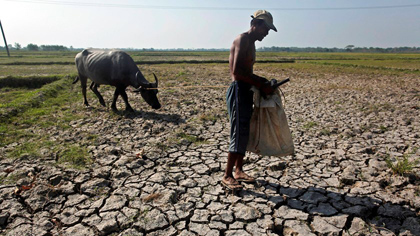The strongest El Nino in decades is going to mess with everything
It has choked Singapore with smoke, triggered Pacific typhoons and left Vietnamese coffee growers staring nervously at dwindling reservoirs. In Africa, cocoa farmers are blaming it for bad harvests, and in the Americas, it has Argentines bracing for lower milk production and Californians believing that rain is finally, mercifully on the way.
 |
| Dried up rice field due to an El Nino-induced drought, in the Philippines. Photo: BloombergDried up rice field due to an El Nino-induced drought, in the Philippines. Photo: Bloomberg |
El Nino is back and in a big way.
Its effects are just beginning in much of the world -- for the most part, it hasn’t really reached North America -- and yet it’s already shaping up potentially as one of the three strongest El Nino patterns since record-keeping began in 1950. It will dominate weather’s many twists and turns through the end of this year and well into next. And it’s causing gyrations in everything from the price of Colombian coffee to the fate of cold-water fish.
Expect "major disruptions, widespread droughts and floods,” Kevin Trenberth, distinguished senior scientist at the National Center for Atmospheric Research in Boulder, Colorado. In principle, with advance warning, El Nino can be managed and prepared for, “but without that knowledge, all kinds of mayhem will let loose.”
Anomalies representing deviations from normal temperatures. Abnormally warm temperatures shown in red, cold in blue. NOAA
In the simplest terms, an El Nino pattern is a warming of the equatorial Pacific caused by a weakening of the trade winds that normally push sun-warmed waters to the west. This triggers a reaction from the atmosphere above.
Its name traces back hundreds of years to the coast of Peru, where fishermen noticed the Pacific Ocean sometimes warmed in late December, around Christmas, and coincided with changes in fish populations. They named it El Nino after the infant Jesus Christ. Today meteorologists call it the El Nino Southern Oscillation.
(Source: TNO)
.
 về đầu trang
về đầu trang






